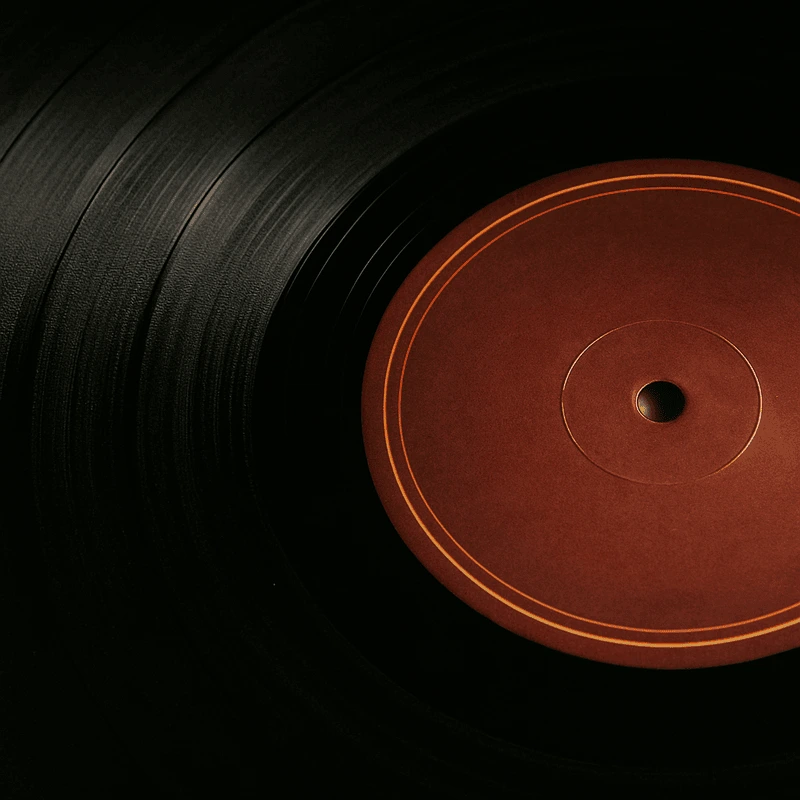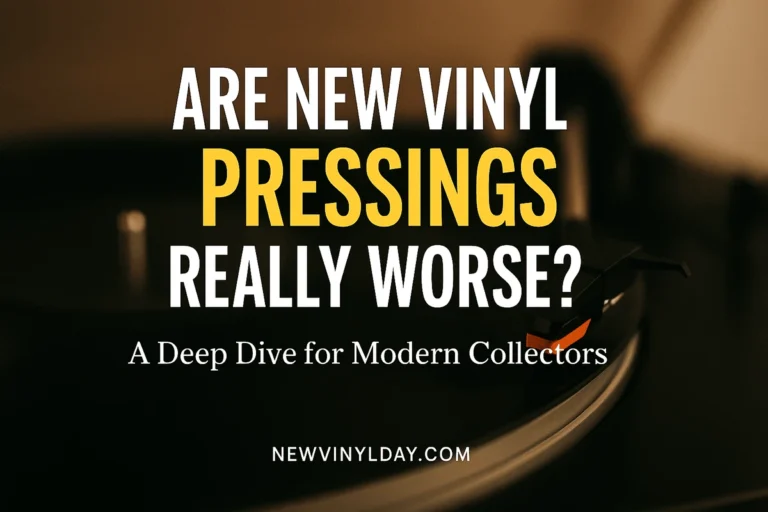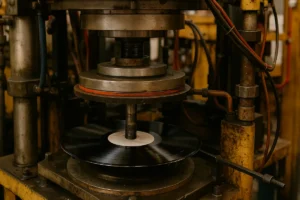Are New Vinyl Pressings Really Worse? A Straight Answer for Today’s Collectors
If you’ve bought a few brand-new records in the last couple of years, you’ve probably asked yourself this: Are new vinyl pressings worse than the old ones? It’s not a snobby or nostalgic question. It comes up when the record you just unwrapped fresh off the shelf sounds noisy, flat, or lifeless. Especially if you’ve already got a worn 1970s copy that somehow sounds richer and more alive.
So what’s going on? Are today’s pressing plants just sloppy? Is digital mastering to blame? Or are we comparing memories of “better sound” to something that was never perfect in the first place?
Let’s break it down and get to the truth, no purist gatekeeping, no audiophile snobbery.
The Truth About New Vinyl Pressings: It’s Complicated
The types covered by old and new vinyl itself encapsulate everything from jewel pieces to utter disasters. Each era has its flawless records, but also abominable ones. Some contemporary pressings are well put together with great sound. Others are done at plants that do not care, are hurried, and are poorly mastered.
In the same way, not all old LPs are masterworks. Many were thinly mastered and mass-produced on inferior vinyl. The bad ones usually, sooner or later, go into bargain bins or into the trash. The good ones survive and trickle into collections.
Hence, some selection bias must have contributed to the feeling that old records sound better. But part of that perception is real. Let’s take a look at why.
Mastering Matters: Why Some New Pressings Sound Worse
The mastering, without a doubt, can make or break any release for vinyl. It is the step where the engineer takes the final mix and prepares it for vinyl, adjusting the sound to accommodate the physical restrictions of the format. And during the golden age of vinyl, especially between the 1960s and 1980s, this was a serious art.
Engineers knew the medium of vinyl. They understood deeply how to deal with bass so as not to distort the groove, how to balance stereo width, and how to keep surface noise minimum. Since vinyl was the principal medium of listening, they took care while cutting. Also, working from fresh tape sources, usually of the original masters.
Masters have gone hit or miss nowadays. New pressings are mostly from digital files, the same files that were mixed for streaming or CD in the first place. These are often compressed, very loud, and punchy with earbuds or car stereos in mind. If just pressed on vinyl without any alterations, it’s guaranteed to sound rather flat or harsh.
Looking on the brighter side, it’s not all bad with the new mastering. Some labels have it right. Reissue series like Blue Note’s Tone Poet, Craft Recordings’ Small Batch, and Acoustic Sounds’ Verve/Impulse! Examples of good modern mastering are all cut directly from tape, handled by trust.
Vinyl Source Debate: Does Digital Always Mean Worse Pressings?
This is where things get messy in a hurry. Certain vinyl aficionados claim that only those pure, fully analogue records, AAA, as vinylists would say, are worth owning. Others maintain that high-resolution digital can do just as well or even better if their mastering is up to par.
Each side has at least a part of the truth.
Yes, indeed: records cut from analogue tape often have warm, natural sounds. But that does not mean digital is always bad. If one has a good 24-bit/192kHz transfer from tape, mastered with great care, and then cut to vinyl brilliantly, magic would happen. Many a modern pressing follows exactly that method, and the results do sound great.
A bigger problem is that the label will never tell you what the source is. No mention of mastering, no indication of whether it came from tape, high-res digital, or CD-quality file: that’s a warning sign. Labels that care tend to be the ones most forthcoming. The ones that don’t care: well, a lot goes unsaid.
Thus, instead of pursuing all things “analogue only,” look for honesty. Look for information. And remember: the very best sounding records, cut digitally, have been done the right way.
Why Some New Vinyl Pressings Sound Worse Than They Should
Okay, so you know how a bad pressing can wreck even a great record? It seems like it happens a lot with all the vinyl coming out these days.
Some pressing plants like RTI, Optimal, QRP, and Pallas do a pretty good job. They care about the vinyl and make sure everything’s lined up right. But some others? Not so much. You might get records that are warped, off-centre, scratched, or just noisy.
Back in the ’70s, pressing vinyl was a smoother process. Plants had lots of practice. Now, with everyone wanting records and not enough places to make them, some plants are swamped or just don’t have the right training. Things go wrong. And when labels care more about making records fast than making them well, you get bad pressings.
What’s annoying is that even big labels will skimp. You might pay good money for a reissue, and it looks great, but it sounds terrible.
That’s why knowing where your record was pressed matters. If it’s from GZ Media or United Record Pressing, read some reviews first. But if it’s from QRP or Optimal, it’s probably going to sound better.

Don’t Be Fooled by 180 Gram Vinyl Hype
One of the biggest myths in modern vinyl is that 180-gram records sound better. They don’t.
Thicker vinyl has benefits; it’s less likely to warp and feels more solid in the hand. But sound quality doesn’t come from weight. It comes from the mastering, source, and pressing.
Some of the best-sounding records ever made were pressed on thin, light vinyl. Plenty of ’60s and ’70s LPs feel flimsy by today’s standards but deliver incredible sound. If a modern record sounds dull or noisy, it’s not because it’s 140g. It’s because something else went wrong.
Coloured Vinyl, Picture Discs, and Sound Quality
Coloured vinyl has a bad reputation, and picture discs even worse. But it’s not always deserved.
Solid-colour pressings can sound just as good as black vinyl if made well. But certain effects like splatter, marble, or glitter can introduce surface noise. And picture discs, which sandwich printed artwork between vinyl layers, almost always sound worse because the grooves are pressed onto a thinner surface.
If you’re buying for sound, black vinyl is still the safest bet. If you’re collecting for the art, just know what you’re getting. Some people buy two copies, one to play, one to display. It’s not a bad move if you’re picky.
New Vinyl Pressings and Packaging: Style Over Substance?
These days, records often have fancy jackets, thick cardboard, cool sleeves, shiny foil, posters, stickers and stuff. It’s a big deal when you buy vinyl now. But just because the packaging looks awesome doesn’t mean the record sounds great.
I’ve seen super nice sleeves holding records that were pressed badly and sounded terrible. And I’ve heard amazing sound from old LPs in crummy, old sleeves. The record inside is what matters, not the cover. Still, cool packaging is a plus, especially if it keeps the record safe. Just don’t forget what’s important.
Vinyl Prices Are Up - But Is Sound Quality Down?
New records often have cool packaging, thick covers, fancy sleeves, foil, posters, and stickers. It’s a big deal for vinyl fans now. But cool packaging doesn’t always mean it sounds great.
I’ve gotten records that look awesome but sound terrible. And I’ve gotten records that sound incredible but have flimsy, old sleeves. It’s the record that counts, not how it looks. Still, cool packaging is a plus if it keeps the record safe. Just don’t forget what’s important.
Let’s face it, vinyl is pricy now. In the UK, a regular record can cost £25–£35. Fancy reissues or box sets can cost £40, £50, or even more. That’s a lot when you can stream the same thing for free or just a few bucks a month. And if the record sounds bad, has weak audio mastering, or you don’t know where it came from, it feels like a rip-off. You can find used records, mainly older ones, for less, and they might sound better.
But they can be scratched, warped, or worn. Some collectors like that, but others don’t.
When New Vinyl Pressings Get It Right
Not all recently released vinyl is bad. Some contemporary pressings are meticulously crafted at every step and have amazing sounds.
Here are some noteworthy examples:
Kevin Grey mastered the all-analogue jazz reissues of Tone Poet (Blue Note), which were pressed at RTI. Excellent clarity and detail.
Craft Recordings: Small Batch – Limited runs, AAA, incredible packaging and sonics.
Vinyl Me, Please (Classics, Essentials) – Quality varies, but many are thoughtfully sourced and mastered.
Abbey Road Half-Speed Masters – Not AAA, but often very clean, open, and detailed.
In these situations, you typically get what you pay for, even though you pay more.
New Albums on Vinyl: What Today’s Pressings Get Right (and Wrong)
Many current artists never had a vinyl release in the past, so there’s no vintage to compare. That means the quality of the new pressing is all you get.
Sometimes it’s great. Sometimes it’s a mess.
Smaller indie labels might only press a few hundred or thousand copies, using whichever plant has capacity. Some get it right. Some don’t.
Check reviews before you buy. Look at Discogs. Ask in forums. Don’t assume every new release is high-quality just because the artist is big.
Vinyl Thoughts: Are New Vinyl Pressings Always Worse?
So are new vinyl pressings worse than they used to be?
Sometimes, yes. But not always.
We’re living in a strange time for vinyl. It’s more popular than it’s been in decades, but the infrastructure and standards aren’t always keeping up. You’ll find junk out there. But if you know what to look for, you’ll also find records that sound stunning.
Read reviews. Learn the names of good mastering engineers. Know which pressing plants do good work. And trust your ears.
New vinyl isn’t automatically worse. But you’ve got to be a smarter buyer now than ever.
If you enjoyed the post, you can let me know on the Contact page.
Don’t forget to Bookmark New Vinyl Day for upcoming posts.




